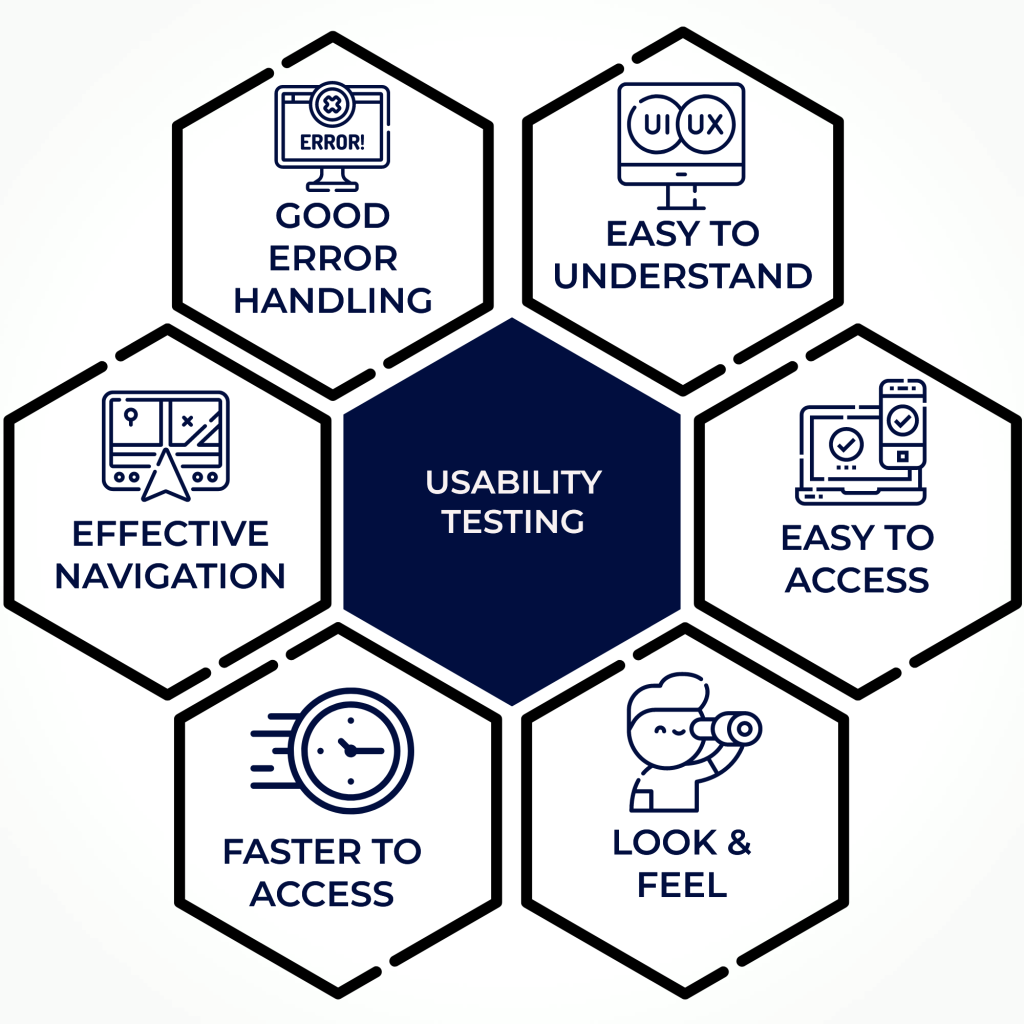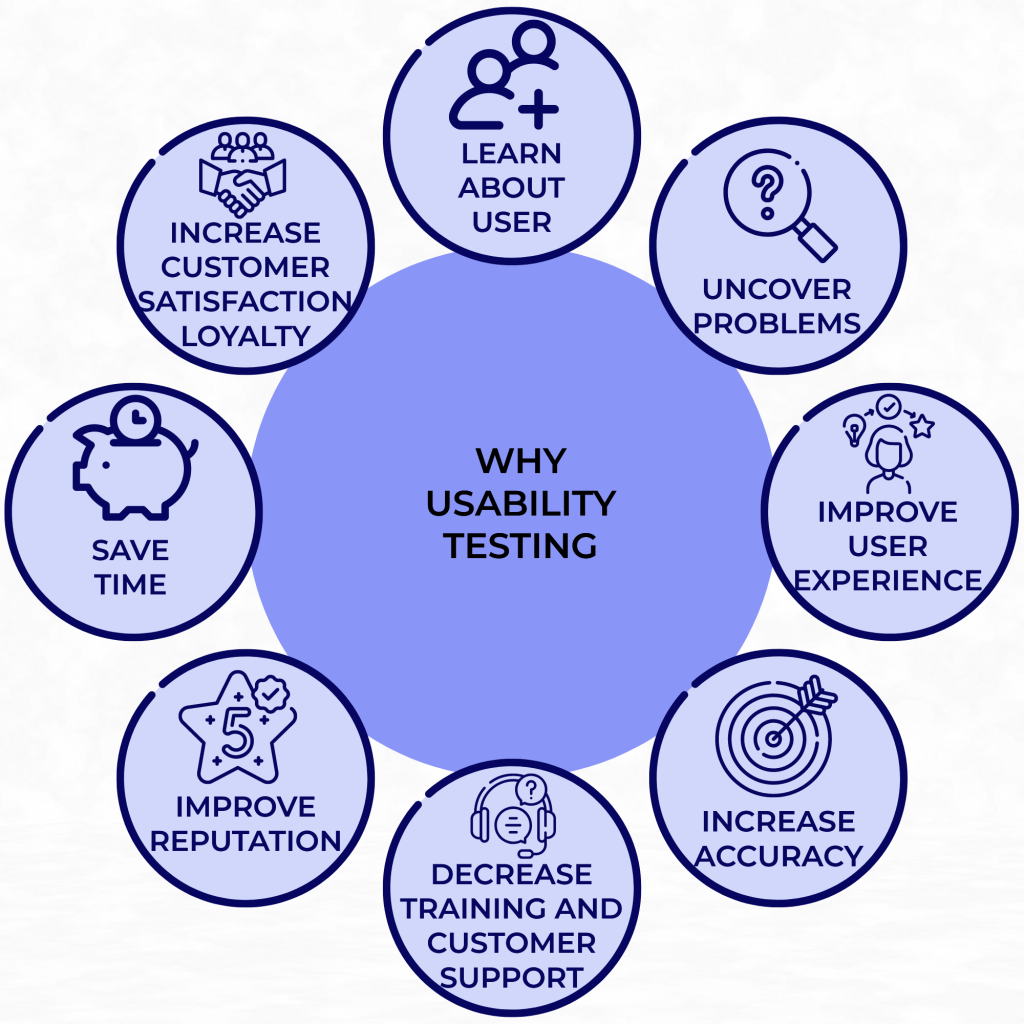Usability Testing

Usability testing is a process used to evaluate how easy it is for users to use a particular software application or website. In other words, usability testing measures how well users can complete tasks using the software or website.
There are two main types of usability testing: formative and summative. Formative usability testing is conducted during the design phase of a project, while summative usability testing is conducted after the product or website has been completed.
The most important part of usability testing is the user test itself. This is where users are given tasks to complete using the software or website being tested. The results of these tests are then used to improve the design of the product or website.
Once user tests have been conducted, the data must be analyzed and reported. This can be done using a variety of methods, such as surveys, interviews, focus groups, or logs. The data from these reports should then be used to improve the design of the product or website.
Our approach
Usability testing is an important process for any business that wants to create a user-friendly product. There are many different steps in the usability testing life cycle, from planning to execution to analysis. Here’s a look at each step in detail:
Enhancing User Experience for Optimal Software Performance
1. Planning: Before you start your usability testing, it’s important to plan out what you want to test and how you’re going to go about doing it. This includes deciding on your goals, target audience, and what type of testing you’re going to do (e.g., lab-based or field-based).
2. Execution: Once you have a plan in place, it’s time to execute your usability testing. This involves setting up your test environment, recruiting participants, and running the actual tests.
3. Analysis: After your usability tests are complete, it’s time to analyze the data you’ve collected. This includes looking at things like task completion rates, error rates, and overall satisfaction levels.
4. Reporting: Finally, once you’ve analyzed your data, it’s time to create a report of your findings. This report should be clear and concise, and should highlight both the successes and areas for improvement of your product.

Why DragonFlyTest
- Improved user satisfaction – By making sure that your product or service is easy to use, you will improve customer satisfaction and loyalty.
- Reduced support costs – If your product or service is easy to use, you will reduce the amount of time and money you have to spend on customer support.
- Increased sales – If potential customers find your product or service easy to use, they are more likely to buy it. Additionally, existing customers are more likely to continue using your product or service if they find it easy to use.
- Defining clear objectives for the usability test upfront, and ensuring that all stakeholders are agreed on these objectives.
- Creating a detailed plan for the usability test, including who will be involved, what tasks they will need to complete, and how long the test will take.
- Conducting a pilot test of the usability test before rolling it out to the wider group of users. This will help to identify any potential issues with the test itself.
- Ensuring that the users recruited for the usability testing represent the target audience for the product or service being tested.
- Making sure that the environment in which the usability testing takes place is representative of the real-world environment in which the product or service will be used.
- Giving users clear instructions on what they need to do during the usability test, and providing them with ample opportunity to ask questions if they are unsure about anything.
- Observing users as they complete tasks during the usability test, and taking note of any areas where they experience difficulty or confusion.
- Encouraging users to provide feedback on their experience during and after the usability test. This feedback can be invaluable in identifying areas for improvement.
From Our Blog Posts

Common Testing Tips and Hacks
Table of Contents TESTING HACKS TESTING HACK # TESTING HACK DESCRIPTION TOOLS TEST HACK STEPS TH_1 To prove that login credentials are stored in browser

Testing Team Growth Path and Core Values and Job Descriptions
Table of Contents CAREER GROWTH PATH-SOFTWARE TESTING QA TEAM ROLES & RESPONSIBILITIES-BE LIKE TESTING SPECIALIST [AUTOMATION TESTING] ROLES & RESPONSIBILITIES: Successful Candidate will join a

Testing Team Career Path and QA Core Values
Table of Contents CAREER GROWTH PATH-SOFTWARE TESTING QA CORE VALUES & RESPONSIBILITIES-BE LIKE Sr/ Test Manager Report to Practice Head – Testing of all QA

